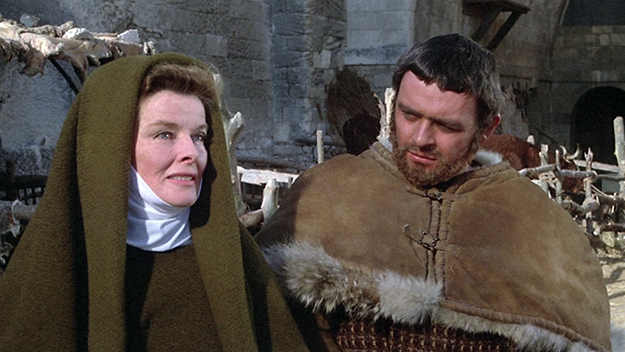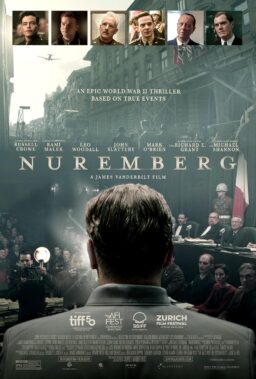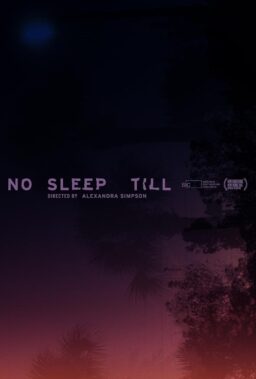There have been countless movies about Christmas family meeting with issues, but not many of them can top the sharp wit and sheer ferocity of “The Lion in Winter”, which revolves around the risky battles of wills among the royal family members of Britain during a bumpy Christmas family meeting in 1183. With the fate of their kingdom at stake, they are quite willing to survive by any means necessary. Your worst Christmas family meeting won’t look that bad compared to all the intrigue, manipulations, and betrayals committed among them.
The head of this family is King Henry II of England (Peter O’Toole), who was the most powerful figure in Europe at that time, reigning over not only Britain but also Ireland and half of France. Although he is still a virile man, he is also well aware of his age of 50 (that is quite old considering how short average lifespan was in the 12th century Europe), and he is going to decide on who will succeed him while he holds a Christmas court at his castle located in Chinon, France. Besides his wife Eleanor of Aquitaine (Katharine Hepburn), their three sons, Richard (Anthony Hopkins), Geoffrey (John Castle), and John (Nigel Terry), will come to the castle. He also invites King Philip II of France (Timothy Dalton), with whom he is going to negotiate an old deal involving Philip’s sister Alais (Jane Merrow).
Henry’s three sons are all determined to be chosen as their father’s successor, but each of them has pros and cons. While Richard looks like the best choice with his growing reputation as a brave warrior, he is a bit too hot-tempered, and he is not loved much by his father. While John is Henry’s favorite son, he is also a dim, spoiled boy, who has been indulged by his father too much, and he is not favored a lot by his mother. While Geoffrey is the smartest one in the bunch, he is a cold, calculating schemer, and he is not so pleased about how he has been neglected by his parents.
And there is also a longtime issue between Henry and Eleanor. They were passionately in love with each other around the time when they married, but they subsequently became estranged because of his frequent infidelity and her following rebellion against him, which led to her imprisonment for the last 10 years. In addition, Henry has recently had an affair with Alais, and he does not even hide their intimate relationship at all from Eleanor and his sons, even though Alais is supposed to marry his successor.
Right from their reunion, Henry and Eleanor wryly greet each other (“How dear of you to let me out of jail.” “It’s only for the holidays.”). There may be some affection and respect left between them despite many years of mutual resentment, but they are also quite frank about their opposing positions, and both of them are certainly ready to strike.
As its main characters try to outwit or manipulate each other under their complex political/personal circumstance, the movie gives us a series of compelling scenes packed with acerbic wit and brutal emotional power. The adapted screenplay by James Goldman, which is based on his play of the same name, deftly mixes dark humor and absurdity into its plot, and that aspect is particularly exemplified well by a certain crucial scene in Philip’s room. At first, it merely shows an impromptu private meeting between two characters, but then it is developed into a far more complicated situation as more characters come into the room where that happens. Goldman’s screenplay masterfully swings back and forth between melodrama and black comedy until this scene eventually culminates to one of the major dramatic points in the film.
Director Anthony Harvey, who initially worked as the editor of a number of notable films including “Dr. Strangelove or: How I Learned to Stop Worrying and Love the Bomb” (1964) and “The Spy Who Came in from the Cold” (1965) and then moved onto the directing career with “Dutchman” (1966), did a commendable job of establishing an indelibly stark period atmosphere on the screen. While the costumes in the film are mostly plain and shabby, cinematographer Douglas Slocombe, who was Oscar-nominated for his work here in this film, makes sure that Henry’s cavernous castle looks dim and dirty, with numerous ugly details to reflect the harsh, barbaric environment. John Barry’s Oscar-winning score, which is probably the most menacing work in his whole career, brings extra intensity to the screen whenever the story takes a major plot turn, and its regal but ominous mix of chorus and orchestra is nothing short of stunning.
Above all, the movie has two legendary movie stars who were at the top of their game when it was made. While he played the young version of his character in “Becket” (1964) a few years ago, Peter O’Toole had no difficulty in immersing himself into his role, and he gave another grand performance to be added to his long, illustrious career filled with many larger-than-life characters including, yes, T.E. Lawrence. Never letting us forget the conniving side of his character, O’Toole is forcefully commanding whenever that is required, and he certainly relishes his several big moments in the film such as when his character furiously rouses up everyone in the castle later in the movie (“When the king is off his ass, nobody sleeps!”).
On the opposite, Katharine Hepburn, who deservedly won her third Oscar for this film (O’Toole was also Oscar-nominated but lost to Cliff Robertson, who won for “Charly” [1968]), is simply magnificent as an aging queen who is not only gracefully authoritative but also fiendishly manipulative. While dexterously handling her numerous juicy lines in the film with gusto (My favorite line: “I could peel you like a pear, and God himself would call it justice!”), Hepburn is also convincing when she reveals her character’s vulnerable side, and it is devastating to watch when she delivers a bitter, reflective monologue after her character has an aching moment of heartbreak.
What goes back and forth between Hepburn and O’Toole during their scenes in the film is captivating to say the least. Despite their considerable age gap, they effortlessly play against each other, and it does not take much time for us to accept the lifelong history of love and hate between their characters. They surely hate each other’s guts, but they cannot live without each other, though they cannot easily admit that.
Around O’Toole and Hepburn, Harvey assembled a group of good performers, some of whom would become more prominent after their appearance here in this film. While Anthony Hopkins, who would be a lot more famous thanks to his chilling, Oscar-winning performance in “The Silence of the Lambs” (1991), is solid as a tough prince with some unexpected soft sides, Timothy Dalton, who would later play James Bond after Roger Moore, brings snaky charm to his young but wily character, and Nigel Terry, who would play King Arthur in “Excalibur” (1981), and John Castle are also effective in their respective supporting roles. As the only substantial female character in the film besides Eleanor, Jane Merrow holds her own small place well around O’Toole and Hepburn, and she and Hepburn have a poignant scene when their characters happen to have a chance to be more honest to each other than before.
“The Lion in Winter” is a smart, electrifying drama, fueled by the powerful acting match between O’Toole and Hepburn. This is one of my favorite Christmas family films, and I think some of you will probably feel a little better about your own family after watching it. After all, as Eleanor says in the movie, what family doesn’t have its ups and downs?











